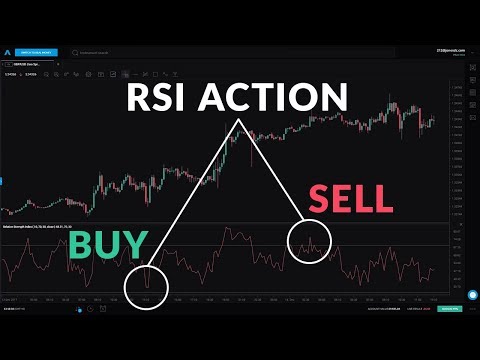Contents:


"Discount on notes payable" is a contra-liability account which decreases the balance sheet valuation of the liability. The rally marks a sharp reversal from last year when value stocks, or those that trade at low multiples of their book value, or net worth, stood out in a down market. Learn accounting fundamentals and how to read financial statements with CFI’s free online accounting classes.

A metric that investors use with regard to book value is BVPS or Book Value of Equity per Share. It takes the net value of a listed company’s assets, also known as shareholder’s equity, and divides it by the total number of outstanding shares of that organisation. In the investing/financial world, book value's meaning is an expanded, extrapolated version of the first definition. It's the total value of all the company's assets — the worth of all the goods, properties, funds, and other things it owns — minus its liabilities — its expenses and debts. Usually, the worth of any intangible assets, like intellectual property or patents, is subtracted too. Monthly or annual depreciation, amortization and depletion are used to reduce the book value of assets over time as they are "consumed" or used up in the process of obtaining revenue.
Legal Definition
The value of wood, gravel, and oil go up with inflation, but many investors overlook these asset plays because the companies don't have the dazzle and flash of growth stocks. Manufacturing companies offer a good example of how depreciation can affect book value. These companies have to pay huge amounts of money for their equipment, but the resale value for equipment usually goes down faster than a company is required to depreciate it under accounting rules. As the equipment becomes outdated, it moves closer to being worthless.
A company’s market value will usually be greater than its book value since the market price incorporates intangible assets such as intellectual property, human capital, and future growth prospects. Value investors look for companies with relatively low book values (using metrics like P/B ratio or BVPS) but otherwise strong fundamentals as potentially underpriced stocks in which to invest. A mutual fund is an entity which primarily owns financial assets or capital assets such as bonds, stocks and commercial paper. The net asset value of a mutual fund is the market value of assets owned by the fund minus the fund's liabilities. This is similar to shareholders' equity, except the asset valuation is market-based rather than based on acquisition cost. In financial news reporting, the reported net asset value of a mutual fund is the net asset value of a single share in the fund.
The stock, then, isn’t really overpriced – its book value is lower simply because it doesn’t accurately account for all the aspects of value that the company holds. Book value only considers the cost to liquidate a firm’s fixed assets and securities. It does not consider intangible assets such as patents, intellectual property, brand value, and goodwill. Moreover, it doesn’t account for how a firm’s assets will generate profits and growth over time. Therefore, the market value, which takes into consideration all of these things, will generally be higher.
https://1investing.in/ization is an accounting method in which a cost is included in the value of an asset and expensed over the useful life of that asset. When compared to the company’s market value, book value can indicate whether a stock is underpriced or overpriced. Book value per share and price-to-book (P/B) ratio are utilized in fundamental analysis. Book value is the worth of a company based on its financial books. Market value is the worth of a company based on the perceived worth by the market. Companies or industries that extensively rely on their human capital will have an inappropriate reflection of their worth in their financial statements.
Formula for Book Value Per Share
Our team of reviewers are established professionals with decades of experience in areas of personal finance and hold many advanced degrees and certifications. It is important to predict the fair value of all assets when an enterprise stops its operations. This means that the realization value of assets of ongoing concern is different from the value of assets under liquidation.
For instance, let us say that Company A and Company B have net worths of $10 million and $12 million, respectively. This does not mean that the latter is the better investment option. Hence, investors consider other metrics along with this figure to compare stocks. This liquidation value can be lower than the book value, especially, when the firm is sold off on short notice, when there are fewer bidders.
A simple calculation dividing the company's current stock price by its stated book value per share gives you the P/B ratio. If a P/B ratio is less than one, the shares are selling for less than the value of the company's assets. This means that, in the worst-case scenario of bankruptcy, the company's assets will be sold off and the investor will still make a profit. You can also determine the book value per share by dividing the number of common shares outstanding into total stockholders' equity. For example, if the shareholders' equity section of the balance sheet contained a total of $1,000,000 and there were 200,000 shares outstanding, then the book value per share would be $5. In the accounting world, book value refers to the worth of a particular asset on a company's balance sheet — say, a piece of property or equipment.
Book Value: Definition, Calculation and Example
In the United Kingdom, the term net asset value may refer to the book value of a company. The company is working to monetize assets with a book value of $4.6 billion, company attorney Andrew G. Dietderich said in federal court in Wilmington, Delaware on Wednesday. This website is using a security service to protect itself from online attacks.
Book value is considered important in terms of valuation because it represents a fair and accurate picture of a company’s worth. The figure is determined using historical company data and isn’t typically a subjective figure. It means that investors and market analysts get a reasonable idea of the company’s worth.
The balance sheet valuation for an asset is the asset's cost basis minus accumulated depreciation. Similar bookkeeping transactions are used to record amortization and depletion. An asset’s book value is equal to its carrying value on the balance sheet, and companies calculate it by netting the asset against its accumulated depreciation.
Top 10 Traded Stocks in February 2023
Let’s say you have total assets valued at £80,000, but your liabilities are worth £100,000 – then you are left with a business with a negative net worth of – £20,000. To put this into an example, let’s say that your company has total assets that are valued at £100,000 and total liabilities of £80,000. They could make a large amount of money but still be working at a loss. That’s why potential investors or shareholders need to dig a bit deeper into the financial depths of a business. A company can also increase the book value per share by using the generated profits to buy more assets or reduce liabilities. For example, if ABC Limited generates $1 million in earnings during the year and uses $300,000 to purchase more assets for the company, it will increase the common equity, and hence, raise the BVPS.
- The company is working to monetize assets with a book value of $4.6 billion, company attorney Andrew G. Dietderich said in federal court in Wilmington, Delaware on Wednesday.
- Our goal is to deliver the most understandable and comprehensive explanations of financial topics using simple writing complemented by helpful graphics and animation videos.
- Our writing and editorial staff are a team of experts holding advanced financial designations and have written for most major financial media publications.
As you can see, the fimeaning of book valuet company looked like the better choice at first, but a deeper dive has raised some red flags. It's important to evaluate book value along with other metrics before you decide whether a stock is a good choice for you to invest your money. Taking a moment to examine your goals, tax considerations and contribution room can help you make the right decision. Central banks determine the right amount of money supply– not too much, not too little – to keep the economy humming. The views and opinions expressed in this publication are for your general interest and do not necessarily reflect the views and opinions of RBC Direct Investing. Furthermore, the products, services and securities referred to in this publication are only available in Canada and other jurisdictions where they may be legally offered for sale.
Book value is a financial measure of a company, and a tool that helps investors tell if its stock is a bargain
Advertising considerations may impact how and where products appear on this site but do not affect any editorial decisions, such as which products we write about and how we evaluate them. Personal Finance Insider researches a wide array of offers when making recommendations; however, we make no warranty that such information represents all available products or offers in the marketplace. In reality, carrying value does not always reflect what shareholders will receive in the event of liquidation. Carrying value is calculated as the original cost of the asset less any depreciation, amortization, or impairment costs. Book value is a company’s equity value as it is reported in its financial statements.
Book value is not necessarily the same as an asset's market value, since market value is based on supply and demand and perceived value, while book value is simply an accounting calculation. However, the book value of an investment is marked to market periodically in an organization's balance sheet, so that book value will match its market value on the balance sheet date. Determining whether a listed company is worth its salt is a complex task. Investors and analysts use several measures to reach a fair valuation of a company to reckon whether that valuation is appropriately reflected in its share prices. Often multiple measures are employed for the purpose, and one of them is book value. From there, value investors compare book value and its permutation, book value per share, to the price of the company's stock.
Book value may also change if you receive return of capital distributions from a Canadian corporation, mutual fund or ETF, for example . One can calculate book value by subtractinga company’s total liabilities from the total tangible assets. To calculate BVPS, individuals must divide the shareholders’ equity by the total number of outstanding shares.
Sagicor Financial Company Ltd. Reports Fourth Quarter and Full ... - Benzinga
Sagicor Financial Company Ltd. Reports Fourth Quarter and Full ....
Posted: Mon, 27 Mar 2023 11:00:00 GMT [source]
Failing bankruptcy, other investors would ideally see that the book value was worth more than the stock and also buy in, pushing the price up to match the book value. That said, this approach has many flaws that can trap a careless investor. A price-to-book ratio under 1.0 typically indicates an undervalued stock, although some value investors may set different thresholds such as less than 3.0.
While it is correct that when the number of shares is doubled the EPS will be cut in half, it is too simple to be the full story. It all depends on how much was paid for the new shares and what return the new capital earns once invested. Depreciation, amortization and depletion are recorded as expenses against a contra account. Contra accounts are used in bookkeeping to record asset and liability valuation changes. Accumulated depreciation is a contra-asset account used to record asset depreciation.

Getting into compliance has caused some companies to cut their book values by hundreds of millions of dollars. Book value meaning refers to a measure of a company’s basic net worth. Comprehensive earnings/losses will increase/decrease book value and book/sh. The book-to-market ratio is used to find the value of a company by comparing its book value to its market value, with a high ratio indicating a potential value stock. A fixed asset is a long-term tangible asset that a firm owns and uses to produce income and is not expected to be used or sold within a year.